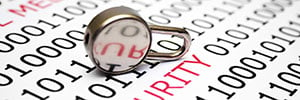Deposit Account Strategies in a Rising Interest Rate Environment
If you have CDs maturing, you may be wondering what to do with that money. If those maturing CDs are at big banks, you probably won’t want to let those CDs automatically renew. I had a 4-year CD at Bank of America that just recently matured. It had a 3.00% APY. After maturity, it was automatically renewed into a new 4-year CD with a 0.20% rate. The longer term CD rates weren’t much better. Needless to say, I closed the CD during the grace period and transferred the money to one of my internet savings accounts.
This Bank of America CD was just a small CD that gave me the necessary combined balance with a checking account to qualify for a free safe deposit box and no checking account monthly fees. This would not be free with current BofA options, but I was grandfathered in many years ago. I found a better safe deposit box option at a local community bank. Since BofA’s CD rates were so low, I decided to close the CD, the checking account and the safe deposit box.
If a CD has a rate that’s lower than top internet savings account rates, it’s an easy decision for me. I’m not going to choose that CD. I’ll move that money to an internet savings account, and then I’ll take my time to decide. If you don’t like internet banks, you may have a harder decision since brick-and-mortar banks and credit unions often don’t offer savings account rates comparable to internet rates.
Barbell CD Ladder
If you’re like me, your savings account balances are probably growing as CDs mature. I have not given up on long-term CDs, but I’ve been trending more toward a "barbell CD ladder" strategy for the fixed-income, deposit account, portion of my portfolio. DA member Shorebreak described this strategy earlier this month in the comments. In this approach about half of the deposit accounts are in long-term CDs and the other half are in online savings accounts and reward checking accounts. Short-term CDs are typically used instead of liquid accounts in a barbell CD ladder, but since short-term CD rates are so low, I think internet savings accounts and/or reward checking accounts make more sense.
If interest rates stay low or fall, a regular CD ladder with long-term CDs maturing in regular intervals will do better than a barbell CD ladder.
If interest rates rise over the next few years, the barbell CD ladder becomes more appealing. The problem is that no one knows how interest rates will change in the future. The faster interest rates rise, the more appealing savings accounts become.
Table of Hypothetical Future Savings Account Rates
If you’re trying to decide between keeping some money in a savings account and putting that money into a long-term CD, the following table might come in handy. It assumes that rates will rise over the next five years. Five different possibilities are provided with different rate hikes.
All start with a 1% savings account for the next year. There’s no guarantee that a 1% savings account rate will be available over the next year, but based on the last year, I think it’s a safe assumption.
After the first year, all the scenarios assume you’ll be able to get higher rates in your savings account. In the left-most column, the rates rise the least. It assumes that the best savings accounts will pay around 2.00% five years from now. In the right-most column, the rates rise the most. It assumes that the best savings accounts will pay around 6% five years from now.
Based on these assumed rate increases, average rates are calculated for the five years. No compounding is considered. You can use these average rates to compare with today’s 5-year CD rates. If the future follows case #2, the average rate over the 5 years will be 2.00%. That’s about the same as today’s best 5-year CD yield of 2.05%.
My main concern with having too much in savings accounts is that it will be hard to know when it’s time to start moving into CDs. As rates start rising, there will always be the question about how much higher they will rise. You may never want to lock into a long-term CD. As we’ve seen in the last five years, that can be costly.
If you want to keep things simple with your deposit account portion of your portfolio, it’s hard to argue against a regular CD ladder. With a regular CD ladder, you don’t have to guess about when rates will rise or how high rates will get.
Possible Scenarios for Future Savings Account Rates
| Year | Case #1 | Case #2 | Case #3 | Case #4 | Case #5 |
| Yearly Rate Increase | 0.25% | 0.50% | 0.75% | 1.00% | 1.25% |
| year 1 | 1.00% | 1.00% | 1.00% | 1.00% | 1.00% |
| year 2 | 1.25% | 1.50% | 1.75% | 2.00% | 2.25% |
| year 3 | 1.50% | 2.00% | 2.50% | 3.00% | 3.50% |
| year 4 | 1.75% | 2.50% | 3.25% | 4.00% | 4.75% |
| year 5 | 2.00% | 3.00% | 4.00% | 5.00% | 6.00% |
| Avg Rate | 1.50% | 2.00% | 2.50% | 3.00% | 3.50% |
To find the highest rates on liquid accounts, please refer to our rate tables for savings accounts, money market accounts and reward checking accounts.

 What Is Bank Fraud? How to Recognize It, Avoid It and Report It
What Is Bank Fraud? How to Recognize It, Avoid It and Report It How to Open a Bank Account for a Minor
How to Open a Bank Account for a Minor How to Balance a Checkbook
How to Balance a Checkbook Retirement Savings: How Much Should I Save Each Month?
Retirement Savings: How Much Should I Save Each Month?

